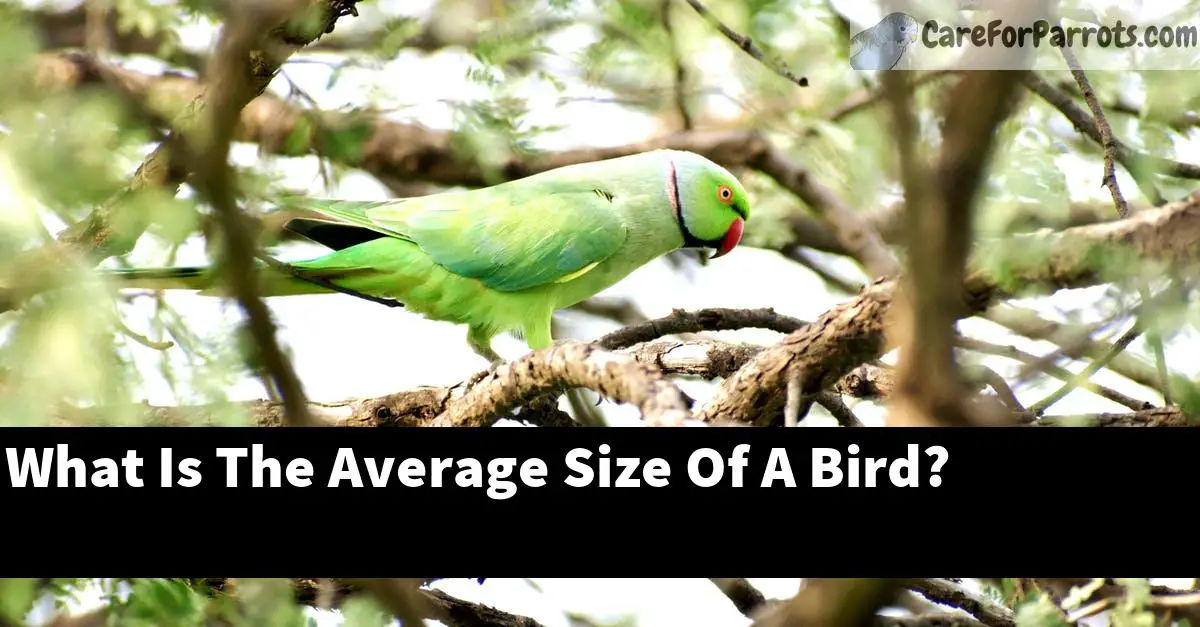Birds come in a wide range of shapes and sizes, and their fascinating diversity is one of the aspects that makes them so appealing. From tiny hummingbirds to the enormous ostrich, there’s a whole world of avian wonders waiting to be discovered.
In this article, we’ll take a closer look at the average size of a bird and delve into some specific examples to provide a better understanding of the incredible variation in the avian kingdom.
The average size of a bird can be quite difficult to pinpoint, as it depends on various factors such as species, habitat, and lifestyle. However, we’ll explore some common sizes and measurements to give you a general idea.
As we dive into the world of birds, we’ll discuss factors that contribute to their size, examine some interesting examples, and even bust a few myths. Let’s spread our wings and take flight on this fascinating journey!
Table of Contents
The Factors Affecting Bird Size
Habitat and Adaptation
One of the most significant factors in determining a bird’s size is its habitat and how it has adapted to it. Birds living in dense forests, for example, tend to be smaller and more agile, allowing them to navigate through branches and foliage. On the other hand, birds that inhabit open spaces like grasslands and savannas may be larger and sturdier, as they face fewer obstacles and need to cover greater distances.
Diet and Feeding Strategies
A bird’s diet also plays a role in determining its size. For example, birds that feed on small insects, like warblers, tend to be smaller, while birds that prey on larger animals or consume fruit, such as eagles or toucans, are usually larger.
Reproductive Strategies
Reproductive strategies also influence bird size. Birds that produce a large number of eggs and offspring may be smaller, as they expend less energy on reproduction. In contrast, species that invest more energy in a smaller number of offspring, such as albatrosses or condors, can afford to be larger.
Examining Bird Sizes: From Tiny to Tremendous
The Smallest Birds
Believe it or not, the smallest bird in the world is the Bee Hummingbird, which measures a mere 2.25 inches (5.7 cm) in length and weighs just 0.07 ounces (2 grams). These tiny creatures can be found in Cuba and the Isla de la Juventud.
The Largest Birds
The title of the largest bird goes to the Ostrich, which can stand up to 9 feet (2.7 meters) tall and weigh as much as 320 pounds (145 kg). These flightless giants are native to Africa and are known for their incredible speed and powerful legs.
The Heaviest Flying Birds
Although the ostrich is the largest bird overall, it cannot fly. The Kori Bustard, found in Africa, is the heaviest flying bird, weighing up to 40 pounds (18 kg). Other heavy-flying birds include the Great Bustard and the Andean Condor.
The Myth of the “Average” Bird
While it’s tempting to try to pinpoint an “average” bird size, the truth is that there’s no such thing. Birds are incredibly diverse, with over 10,000 species, each with its own unique characteristics, adaptations, and sizes. Attempting to find an average size would be oversimplifying this beautiful complexity.
Conclusion
In the end, the average size of a bird is not a straightforward answer, as it varies significantly depending on factors such as habitat, diet, and reproduction. From the tiniest hummingbirds to the largest ostriches, birds showcase an incredible range of sizes and adaptations, making it difficult to pinpoint a single “average” size.
Instead, we can appreciate the vast diversity and fascinating characteristics of these amazing creatures, each playing a unique role in the ecosystems they inhabit.
FAQ
Q: What is the smallest bird in the world?
A: The smallest bird in the world is the Bee Hummingbird, which measures only 2.25 inches (5.7 cm) in length and weighs a mere 0.07 ounces (2 grams).
Q: Which bird is the largest in size?
A: The Ostrich is the largest bird in the world, standing up to 9 feet (2.7 meters) tall and weighing as much as 320 pounds (145 kg).
Q: What is the heaviest bird that can fly?
A: The Kori Bustard, found in Africa, is the heaviest flying bird, weighing up to 40 pounds (18 kg).
Q: How many bird species are there in the world?
A: There are over 10,000 known bird species in the world, each with its own unique characteristics, sizes, and adaptations.
Q: Do all birds fly?
A: No, not all birds can fly. Some birds, like ostriches, emus, and kiwis, are flightless and have adapted to their environments in other ways, such as running or swimming.





